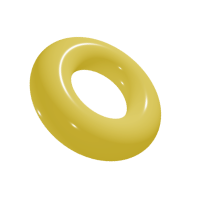
 ✕
✕
“Barbie Doll” by Marge Piercy mirrors the life story of a typical girl, who, since her childhood, falls victim to conventionality reigning in a society and eventually dies in the name of artificial beauty and societal conventions. In Piercy’s narrative, open-form ironic poem, the observer tells the reader how the child subconsciously perceives the dominating ideas of beauty, perfection, and a model in the form of a game with dolls, which later makes her imitate Barbie’s lifestyle and appearance and even sacrifice her life for dollish beauty and life. Piercy renders this theme using aspects of imagery and figures of speech, which make the issue of female objectification even more acute.
The first stanza describes girl’s childhood: “This girlchild was born as usual / and presented dolls that did pee-pee/ and miniature GE stoves and irons/ and wee lipsticks the color of cherry candy” (lines 1-4). Thus, the poet underlines the girl’s typical nature. It is noteworthy to consider which behavioral patterns Barbie Doll teaches. First, “doing pee-pee” presupposes the so-called “potty exercise”; “miniature GE stoves and irons” stand for cooking and cleaning; “wee lipsticks the color of cherry candy” imply the idea of make-up as an inherent part of every woman. The word “wee” in the fourth line of the first stanza is defined by Dictionary.com as “very small.” However, it can also mean “urine” or “to urinate,” and it is very likely that with the fourth line, Marge Piercy wants to prove futility of cosmetics, which is nothing but an artificial mask on a woman’s face.
The lines of the second stanza tell the reader that the girl is intelligent, skillful, and even possesses “sexual drive.” The phrase “the magic of puberty” infers “the powerful and extraordinary nature of the emotional and hormonal changes that transform her from a girl into a young woman capable of bearing children” (Wart 1). The third stanza describes how conformists willingly help the girl to adjust to social standards that are of the highest value: “She was advised to play coy, / exhorted to come on hearty, / exercise, diet, smile and wheedle” (lines 12-14). The verbs “advised” and “exhorted” imply that women are meant to please others, especially men. Such a price is too high for a pure soul; in the last stanza, the girl decides to get rid of physical flaws: “Her good nature wore out / like a fan belt. / So she cut off her nose and her legs / and offered them up” (lines 15-18).
The word “casket” that occurs in line 19 is defined as “a coffin” or “a small chest or box, as for jewels.” In this respect, artificial beauty closed in the casket may be compared with jewels in a small chest. The final stanza presents a dead women, who is finally treated as “pretty” since she has “the undertaker’s cosmetics painted on” and “a turned up putty nose” (20-21). The word “putty” denotes “any of various substances for sealing the joints of tubes or pipes, composed of linseed oil with red lead, white lead, iron oxide, etc.” Is not that ironic that a human face is equaled with tubes or pipes? Through such a comparison, the poet seems to underline once more the vainness of artificial beauty.
The poem is full of rich imagery, which perfectly helps Piercy to get her message across. The most vivid image is a Barbie doll that becomes personified and stands for a model of an “ideal” traditional woman, who is supposed to be nothing but a colored housewife. Indeed, Barbie “embodied the ideals and values of a middle class suburban housewife who spent days at the country club and her afternoons cooking dinner for her husband” (Semansky 1). As Alice Van Wart puts it, “The Barbie Doll, more than being a favorite with adolescent girls, is a cultural icon of femininity that carries with it complex associations of ideal beauty and desirability” (1). Piercy revolts against a society, which does not value human natural values, such as intellect, health, dexterity, and where artificiality deserves higher praise.
Another conspicuous image is “a great big nose and fat legs” that is collapsed into the comic image of “a fat nose on thick legs” (Wart 1). Piercy uses synecdoche “to draw attention both to her use of irony and the sad fact that the young woman can only see herself in the terms of some artificial ideal.” This figure of speech is also used to present the girl as “the sum of her imperfect parts,” and “the image of the woman cutting off parts of her body points to a growing popularity among women of using cosmetic surgery to perfect their appearances” (Wart 2). The litotes “miniature GE stoves and irons / and wee lipsticks the color of cherry candy” intensifies women’s humiliation, meaninglessness, and inferiority in a patriarchal society. The simile “her good nature wore out / like a fan belt” suggests that a woman’s soul, in her striving for artificial beauty, becomes nothing but a mechanical part of an inanimate object.
Find more in article “Article Critique Writing“
Since the poem is written in free verse, there is no definite rhyme. As Louise Deutsch mentions, “End rhyme is absent, but the reader can locate internal assonance and alliteration with relative ease. Iambs and anapests sustain a melodic rhythm throughout the poem, which creates an ironic contrast to the poem’s serious content” (Deutsch 1). The bitter irony reaches its peak in final lines, where people admire a dead woman “in a pink and white nightie,” which symbolizes femininity and purity and with “a turned-up putty nose,” which is viewed as perfect. Declaring “Consummation at last / To every woman a happy ending,” Piercy warns all girls and women who may want to follow this girl’s tragic path.
All things considered, “Piercy offers the reader, in minimalist, almost clinical third-person narration, what may happen to women who accept or fail to transcend their objectification by society” (Deutsch 2). The poet’s masterful usage of personification, litotes, simile, irony, and synecdoche allows her to create a bright image of a mechanized conventional woman who cannot withstand a societal pressure. For me, “Barbie Doll” by Marge Piercy means a truthful depiction of the spiritually impoverished modern world, where one’s moral decay and physical death are the price one should pay for illusive striving for superficial perfection. The poem proves an old truth that non-conformity eliminates one’s right to be called a member of this or that society.


